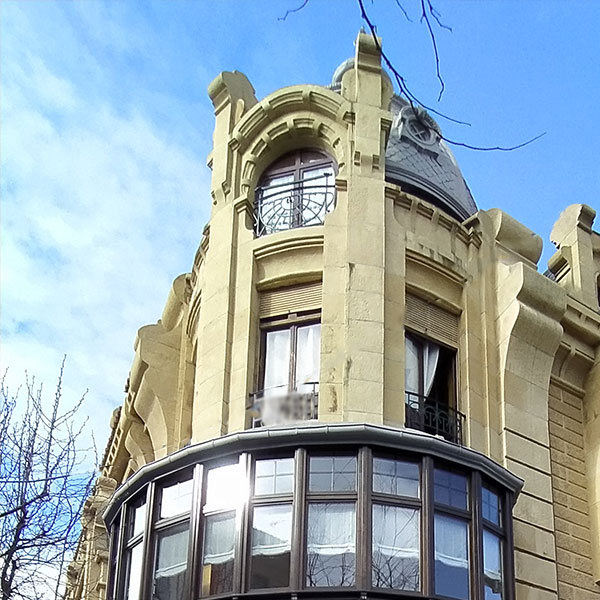How to get
2. Plaza Berria
Plaza Berria
Early 20th century
It is Saturday, 27 September 1924. Plaza Berria is packed. There are no stalls of baserritarras, but many traders make the most of the occasion to sell all sorts of things, with their usual oratory skills.
Among the crowd you can see “Txirrita”, the popular bertsolari who sells verses printed on paper. Some people ask him to write coplas, generally to mock people of reproachful behaviour. As he passes through Kale Nagusia,Joxepa Zubeldia is likely to answer him from the balcony in a spectacular improvisation battle. Women bertsolaris are not common, but Joxepa is not a normal woman. As a young girl she had to go to serve in Madrid. There she married but, when her husband fell ill, she had to return to her native Hernani. She never stopped singing bertsos.

Joxepa Zubeldia composed some verses against the popular revolt, which in 1918 opposed the transfer of smallpox patients to the Hernani hospital.
It was, mainly, the action of the women of the town that stopped this governmental imposition.
People have come from Donostia, Irun, France… Because today is the final of the “Second edition of the Lasarte-Oria motor racing circuit”. The fastest race cars, the most famous brands and the best drivers in Europe will pass through the centre of Hernani; the expectation is enormous.

Lasarte-Oria automobile circuit.
For years, it was one of the most spectacular circuits in the world and one of the drivers’ favorites. A route of just over 17 kilometers that passed through the towns of Lasarte, Andoain, Urnieta and Hernani.
At the beginning of the 20th century, Hernani experienced a certain economic boom. The streets are paved, lighted with electricity, there is a post office and a public telephone. But the great revolution was brought about by the tramway, which has connected Donostia and Hernani since 1903. Many people from the capital come to the town to stroll around, enjoy its “sagardotegis” or taste the delicacies of the Adarraga chocolate shop. As they disembark at the station, they meet the “baserritarras” who board the tram loaded with their best goods, and the washerwomen who carry the clean clothes of the wealthy people from the capital. Once on board and after the tram turns at Plaza Berria, they will head for Donostia.
The tramway makes it easier for people to move around and brings the capital’s fashions to the town. In fact, in 1907, a beautiful house was built in Plaza Berria, with marvellous stained-glass windows and a chapel, in a modernist style with a romantic air. The work of the famous architect Ramón Cortázar from San Sebastian.
In this prosperous atmosphere, no one could have imagined the misery and pain that the war of 1936 would bring a few years later, but that is another story.
Links of interest:
Josepa Zubeldia:
Jose Manuel Lujanbio “Txirrita”:
https://eu.wikipedia.org/wiki/Jose_Manuel_Lujanbio
Lasarte-Oria automobile circuit.
https://es.wikipedia.org/wiki/Circuito_de_Lasarte
https://zona-rapida.blogspot.com/2018/09/carteles-semana-automovilista-san.html
https://elacelerador.com/tag/hernani/
The Hernani Tram
http://ondarea.hernani.eus/hernani/liburuak/1119.pdf









